Discoveries in Paris: the European Union Contest for Young Scientists Inspire article
On 11-16 September 2009, the annual European Union Contest for Young Scientists (EUCYS) took place in Paris, France. Marlene Rau, a member of this year’s jury, reports.
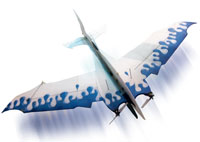
reverse gear
Image courtesy of Inger Gram
Torhild
Palais de la découverte – the palace of discovery: for six days, it was buzzing with young people from across Europe and beyond, bringing along their scientific discoveries, their enthusiasm, inventiveness and creativity. For them it was an opportunity to meet fellow science enthusiasts from 37 other countries, make friends and discover the world of science – and of course, their host city, Paris.
A total of 132 talented young scientists had come together to compete in EUCYS 09w1. All of them first-prize winners of their national contests, they came to present a wide variety of projects, either individually or as a team.
The international jury had a tough decision to make: the topics ranged from butterfly ecology, nanotechnology and biofuel generation; through a cappuccino logo printer, new solutions to mathematical problems, Alzheimer’s disease or cancer research, and algorithms for 3D imaging; to the exploration of galaxies, the physics of medieval trebuchets, or a study of the ideal personality traits to become a neurosurgeon.
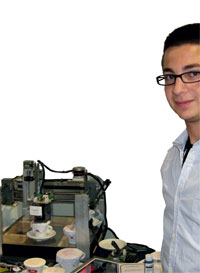
his cappuccino logo printer
Image courtesy of Inger Gram
Torhild
It was not only the topics that varied so greatly: the contestants came from different backgrounds and age groups (14 to 20) and had access to different levels of resources – some had the best possible while others had virtually none. Some had even patented their inventions already. Most of the contestants faced the additional challenge of presenting their project in a foreign language – English – the standard of which also varied greatly between the young scientists. In the face of all this variety, the jury’s task was to assess not only each project’s scientific soundness, originality and creativity, but also the students themselves and the structure of their presentation. And that was no easy task – after all, they were all winners in their own countries.
Yet the fact that there was a generous total of €51 500 in ten main prizes from the European Commission, plus 19 sponsored travel prizes to a range of scientific institutes and events to be distributed – including six one-week placements at the EIROforumw2 organisations and a visit to the Nobel Prize Awarding Ceremony – ensured that all of the most worthy projects were rewarded.
After many interviews with the contestants and heated debates among the jury, the decision was made: the three first prizes went to Fabian Gafner from Switzerland (19), who built a model airplane which can fly backwards; Liam McCarthy (14) and John O’Callaghan (15) from Ireland, who developed a simple method to determine the number of somatic cells in milk, which will help farmers in their daily work; and Aleksander Kubica (20) and Wiktor Pilewski (20) from Poland, who studied the properties of spiral zone plates – a cutting-edge science topic in optical physics. Details of these and all other projects, as well as a video of the contest, are available onlinew3.
Above all, it was the contestants’ scientific spirit that counted: “Everybody wants to win – some want it more, some want it less – but it’s not the most important thing. We didn’t do our research for this or any other competition – but because we’re interested in the subject and we wanted to investigate it!” as one participant put it wisely.
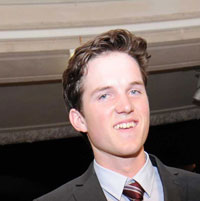
winner from Switzerland
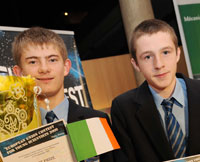
Callaghan, first-prize winners
from Ireland
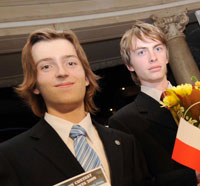
Kubica and Wiktor Pilewski
Of course even the most dedicated scientist needs an occasional break; the contestants were taken up the Eiffel Tower and on a cruise along the River Seine, visited a number of science museums, and had the opportunity to meet eminent scientists both at a round-table discussion and in lectures. Even after three exhausting days, packed with new experiences, the contestants were alert enough to quiz the EIROforum evening lecturers, Jacopo Lucci from the European Molecular Biology Laboratoryw4 and Paula Stella Teixeira from the European Southern Observatoryw5, after their talks.
To supplement the official programme, a number of student hosts from the Université Paris XI had organised further tourist trips for the contestants and introduced them to the Montmartre nightlife – a highlight of the youngsters’ stay in Paris.
EUCYS is a great experience for everyone involved – why not tell your students about it? Encourage them to develop their ideas and enter your national competition – and with a bit of luck, we’ll meet them at EUCYS 2010 in Lisbon, Portugal.
Web References
- w1 – To find out more about the European Union Contest for Young Scientists, see: http://ec.europa.eu/research/youngscientists and www.eucys09.fr
- w2 – Learn more about EIROforum, the publisher of Science in School, here: www.eiroforum.org
- w3 – For the full information on all winners and projects, and to watch the official EUCYS09 video, see the EUCYS09 website (www.eucys09.fr) or http://tinyurl.com/ybdwj9b for the winners, http://tinyurl.com/y9t8gyw for the projects, and http://tinyurl.com/ydnmvsa for the video
- w4 – You can find out more about the European Molecular Biology Laboratory here: www.embl.org
- w5 – To find out more about the European Southern Observatory, see: www.eso.org
Resources
- To find out more about the national competitions and to contact your national organiser, see: http://ec.europa.eu/research/youngscientists/index_en.cfm?pg=organisers
- For a flavour of the EUCYS spirit and its contestants, watch a fun video of their Seine cruise with interviews: www.youtube.com/watch?v=sOSkI8MJLBM
- Read what it’s like to be a EUCYS contestant in the blog of Courtney Williams from the UK, the lucky 2009 winner of an EIROforum special prize visit to CERN, the European Organization for Nuclear Research, in Geneva, Switzerland: www.butrousfoundation.com/ysjournal/?q=node/108
Institutions






